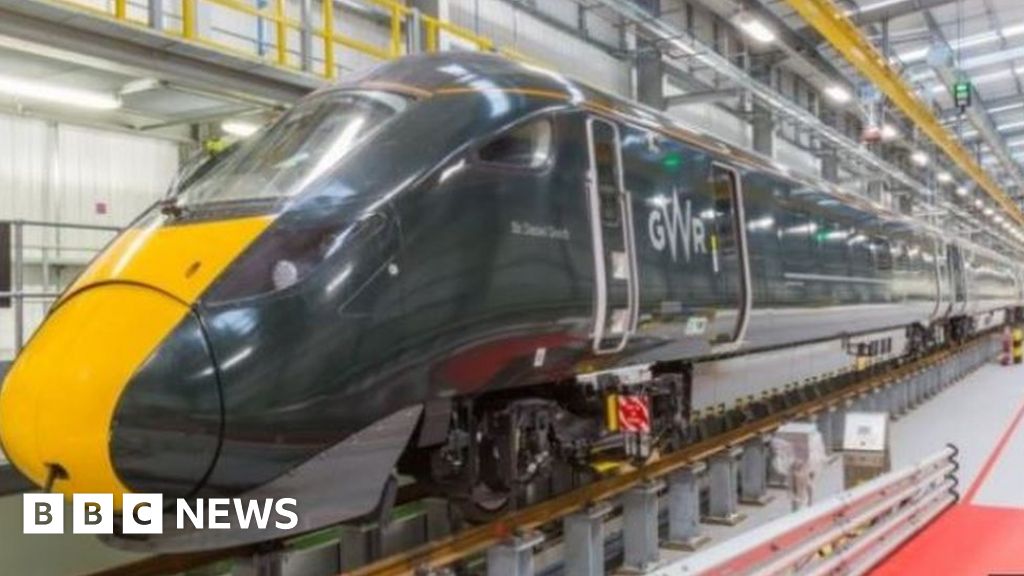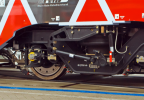fgwrich
Established Member
Any chance of a link if they're public please?
From the NIR.
Any chance of a link if they're public please?
The one thing I note is how often this is made out to be a 'recent' thing affecting new trains. One point I'd like to make is how throughout history there have been build issues with scores of trains!
Steam locos
Mk2 coaches
Class 86s
HSTs
InterCity 225s
Class 150s
Class 158s
Various EMUs
Various other DMUs
Any info as to which units are involved?8 Hitachi class 800 5 carriage trains have been withdrawn from service due to significant cracks found in the yaw damper bolsters. Not just CAF who appear to have problems with designing/manufacturing vehicles to cope with UK infrastructure.....
Being a bit pedantic, that's not true actually as there's been no "operational safety cases" since 2006 when ROGS replaced the Safety Case regulations. These days it's Safety Certificates for a Train Operator and in more recent years there's the interface of TOC and ECM to be considered...... both Train Operator and ECM have duties wrt rail vehicles...... albeit usually less complex in TOC-land than in FOC-land as for passenger vehicles the TOC usually performs ECM duties and is deemed competent to meet ROGS Reg 18A duties on the basis they hold a Safety Certificate and the ROGS criteria for Safety Certificate assessment include a chunk on fleet management (ECMs only need to be specifically certified for wagons- the EU Directive extending such certification to locos and non-wagons was NOT adopted into GB law on 1 Jan 2021). The commercial arrangements don't always match up precisely with the regulatory requirements either.......
One of the perennial issues is who can actually raise a NIR under RIS-8250-RST (as in: who has the sort of NIR Online account to do so). Generally only Railway Undertakings and ECMs that can do so- which means that a defect can circulate for a bit in the supply chain before a TOC/FOC realises that there's a defect they have which also meets the criteria for an NIR- and only then does the NIR get raised (yes I do know of examples). Albeit I doubt that applies in this case as it's a much tighter fleet and much closer to the TOC, so looks like it's been raised in good time. My experience with GWR was that they have always been very level-headed with their NIRs so I would expect it's all well under control.
As ever, the check/inspection programme will find the issue, the engineers will work hard on risk assessments to keep as much running (safely!) as possible and the issue will get sorted. I can't really get excited by this, as others have said there's always issues when new vehicles are introduced it's just we're so much better at (a) finding them (b) spreading the word to other operators and (c) putting in place a risk based action plan to manage the situation safely.
TPO
Given the (so far) affected sets are from the Kasdo/Newton Aycliffe Class 800 build, it's not a factor.The AnsaldoBreda heritage is still there !
It's available to authorised users (log in required) - given this I'm surprised to see the detailed content being shared in public.Does anyone have a link to the NIR if applicable?
The one thing I note is how often this is made out to be a 'recent' thing affecting new trains. One point I'd like to make is how throughout history there have been build issues with scores of trains!
Steam locos
Mk2 coaches
Class 86s
HSTs
InterCity 225s
Class 150s
Class 158s
Various EMUs
Various other DMUs
I've often wondered what's different about UK infrastructure which seems to cause problems with imported kit which works we elsewhere.When the 395's were in the design phase the consultancy I was working for at the time was involved, contracted to Hitachi to assist with UK infrastructure interface, and I heard a senior consultant recount that when they'd reviewed the proposed bogie design Hitachi had been told that, while it may be fine for HS1 operation, it would not last when operated on the SE "traditional" routes.
Hitachi reportedly expressed surprise, as they said it was their standard bogie design and it met all of the European standards, but were told in no uncertain terms that it was not robust enough and needed beefing up to cope with UK infrastructure.
In the last week I've heard a consultant who was involved in the CAF 195 design in a similar role recount exactly the same experience....
Let us not forget that every class 60 required a new three piece drivers side window at each end, simply because the driver was not positioned at the planned original position. Look at any class 60 and compare drivers side to secondmans side cabside windows, where the latter were not replaced.Pretty much this....
Marston cooler groups throwing oil everywhere on HST's springs to mind, and all the overheating woes that caused up until they were re-engined according to a few online sources.
The recent Mk3 coach rebuilds were also a nightmare, partly because of the incredibly slack tolerances used in their production - wide tolerances do not equal good build quality! I've worked in various bits manufacturing long enough to know that.
I've often wondered what's different about UK infrastructure which seems to cause problems with imported kit which works we elsewhere.
They forgot to specify compliance with infrastructure to GB group standards and not the European interoperability ones. Track geometry in some sidings and turnback locations is more extreme in the GB curvature.
I have suspicion that large rotations with movement near the end of ranges might prove quite interesting.
Dampers can do interesting things near the end of their movement ranges...
I stand corrected. Jusf remember they were Swiss bogies.Blue Pullman had Schlieran bogies not SIG.
Both Swiss, but different companies.
A very different type of failure to the CAF problems and the Hitachi is a lot more solidly built.
Bogie rotational velocity/acceleration is greater than anticipated? Maybe when transitioning from plain line to curved? Or maybe primary suspension bushes are stiffer in yaw than intended so axle movement relative to bogie is reduced and bogie movement relative to body is increased?A very different type of failure to the CAF problems and the Hitachi is a lot more solidly built.
The failures are directly above the secondary vertical damper mounting point, the vertical damper is much more likely to generate the cycling stress state need for this fatigue cracks grow. (I'm struggling to understanding how cyclic extending forces on the yaw damper could do that unless it runs out of travel on tight bend a huge number of times)
Zero.What chance of 365s coming out of storage and running to Leeds and York....
The discovery of this fault came about because Hitachi, after learning about the 195/331 issue, bothered to look, even though their units are very different.
They saw a crack in the paintwork on one set and initially thought it was just scoring but thought again, did an NDT, and when the results showed a small but significant crack, they started looking at other units that had paintwork cracks.
The dampers are primarily designed to reduce rotational movement and the speed of rotational oscillation at higher train speeds when there shouldn't generally be large displacements as the track curvature can't be that large at those speeds. Which then leaves sudden changes in track curvature e.g. plain line to curved (and v/v) or low speed movements with large displacements.Bogie rotational velocity/acceleration is greater than anticipated? Maybe when transitioning from plain line to curved? Or maybe primary suspension bushes are stiffer in yaw than intended so axle movement relative to bogie is reduced and bogie movement relative to body is increased?
Damping is velocity sensitive, not displacement, so unless as you suggest the yaw damper is stroking out then it suggests it's a velocity issue if it stemming from the yaw damper itself...
Is there any spare HST sets available?I'd laugh if LNER had to put every available 225 back in service to cover!
Vaguely, Great Heck sticks in the mind more so.Yes, can anyone remember the Sandy derailment of a GNER 225 set? And the rare example of joined up thinking in the privatised world as WAGN's class 365s stepped in to run the services to Leeds, being rapidly route cleared to do so.
All 225s were taken out of service for checks.
They were built Banana shaped, quite literally, to simplify assembly on the jigs by allowing for hogging when fitting up. Unfortunately it seemed to lead to wide ranging tolerance issues with doors and other fittings.Pretty much this....
Marston cooler groups throwing oil everywhere on HST's springs to mind, and all the overheating woes that caused up until they were re-engined according to a few online sources.
The recent Mk3 coach rebuilds were also a nightmare, partly because of the incredibly slack tolerances used in their production - wide tolerances do not equal good build quality! I've worked in various bits manufacturing long enough to know that.
Plenty in store, but I'd imagine competence has completely gone, at least with 225 sets LNER still has some crew passed to work them.Is there any spare HST sets available?

Six trains, part of a new high-speed fleet, have been taken out of service after hairline cracks were discovered.
Great Western Railway (GWR) said the cracks were found during routine maintenance of two of its Hitachi 800 trains.
It said "possible issues" had been discovered on another six trains, which had been withdrawn from service while investigation work was carried out.
Their withdrawal had no impact on passenger services.
GWR said the hairline cracks were "in areas where the suspension system attaches to the vehicle body on two trains".

That's interesting … I took a look at some pictures of class 80x bogies, and the yaw damper on these seems to be very close to horizontal, in fact, so their poor ride quality must have some other cause(s)!The ride quallity can be bad if the yaw damper is too steep since it starts to transmit vertical forces from track irregularities to the carbody.
Maybe, it's still coming from the yaw damper. Had the first time a close look on a 800. The bracket is very long in vertical direction. So this lever may still be able to transmit vertical forces in the carbody, just by acting as a lever converting horizontal forces into vertical forces.... the yaw damper on these seems to be very close to horizontal, in fact, so their poor ride quality must have some other cause(s)!
Maybe, it's still coming from the yaw damper. Had the first time a close look on a 800. The bracket is very long in vertical direction. So this lever may still be able to transmit vertical forces in the carbody, just by acting as a lever converting horizontal forces into vertical forces.
